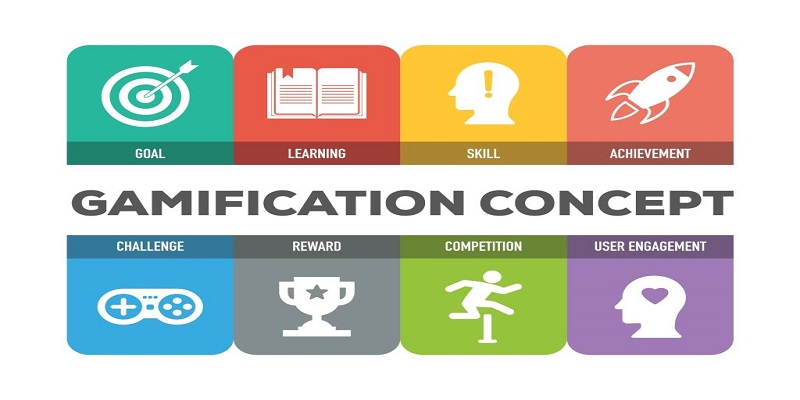
With the advent of technological innovation, the entire industry has been transforming each day by adapting and utilising the benefits of the technology solution utmost, as it helps to ease the workflow of any organisation. The ecosystem has witnessed how the Internet of Things (IoT) has transformed and became the Internet of Everything. Likewise, with the popularity of gaming, gamification is the new IoT which has started transforming the ecosystem, along with that is XR. The pandemic and lockdown have taught us how immersive technology can ease the workflow of an organisation remotely, or to stay motivated while working from home.

To know more about how gamification is actually transforming the ecosystem Animationxpress reached out to XR Central co-founder Shrey Mishra. He has shared how they have worked extensively with enterprises and provided solutions with immersive technologies like augmented and virtual reality.
“We have partnered with Emcure pharmaceuticals and enabled all their channel salespeople in a fun quizzing platform. Initially, the pharmaceutical company shared with us that their medical representatives spend a lot of time waiting for the doctor. So, how can we engage with them? So we have created the multiplayer quizzing platform as the quizzes could be updated from our panel. We integrated gamification elements to increase the content consumption. Leader board, badges, points of scoring, these were the major pillars of the gamification elements but the biggest differentiation factor was actually the content which is the base of how you drive gamification or the consumption of the content. So we have used gamification as one of the frameworks to increase the consumption with that we could engage 80 per cent of the channel sales people,” Mishra shared.
Apart from that, they have actually created one learning app for Spicejet where they can play games and learn. For example, a game like Subway Surfer where one collects coins. Once a player collects say about 10 to 15 points if they have some questions that they want an answer to, they could utilize those coins to get the answer. He has noticed that with the incorporation of gamification younger audiences of the app find it much simpler to consume content.

Here are the other two solutions that they have provided to ease the workflow:
Forevermark India wanted to honour its commitment to its partners and stakeholders by proceeding with its annual Forevermark Forum. The ninth edition of Forevermark Forum 2020, was the first-ever forum was moving to the virtual world. With the given scale of close to 10,000 concurrent attendees across 40 countries and 2800 companies, the challenge was to make sure the solution provided was robust, scalable and most importantly secure. Forevermark stated that they are looking for the latest technology which is immersive and “not a webinar”. The solution had to be 3D, interactive with gamification and collaboration layers for real-life like engagements. So XR Central built solution and modules around its most trusted virtual spaces platform – CUBE. The technology used was WebGL, which is device agnostic and a browser-based solution to web 3D application of the virtual spaces. Many customised modules such as- meeting scheduler, live chat support, mini-maps of the space (2 lac. sq. ft), 2-factor authentication using OTP and email validation, HTML based event microsite, traversal system, forced layouts, and deep analytics to track each and every attendee’s behaviour and most importantly the leaderboard were taken care of. And their work was highly appreciated by all.
Teamwork Arts and Ojas Arts were exploring a tech partnership to conceptualise, build and operate a virtual art exhibition that will help raise funds and help folk artists across the country to promote their artworks. The art forms were across four forms: Gond, Madhubani, Mithila, Bheel and Warli. The solution to be built had to provide art enthusiasts an opportunity to explore Indian indigenous art within the digital realm like never before. Since this virtual art exhibition will be the first-ever time in India, the functionality and feature set had to be simple and intuitive. The average target age group was 45 years. Hence simplicity and ease to understand the technology was the biggest feature that needed to be built-in. The solution had to be 3D, interactive and should give the feel as if one is walking in a real art exhibition or a gallery, built with a fully immersive 3D and interactive art exhibition. Given the feature sets that the client wanted, they customized their virtual events platform – CUBE. The solution was divided into 4 different art zones, to portray one form of the folk-art representation. Each zone had multiple layers of media embed, including videos, images and texts. Each zone had an average of 25 paintings hung on the walls, few were hung on accent walls. The solution enabled art lover (user) to go very close to each painting, as they would in a real gallery. Options such as info on the painting, artists, price and buy now were embedded into the experience. Some of the other features that were built to promote real life-like experience were: social chat, enquiry forms, simple navigation, quick look catalogue, and quick link menu for easy use.
Apart from that he also shared that how during Covid they have helped Spice Jet with their technology for gamification, games for learning, immersive learning, and training that were considered seriously by SpiceJet as essential services.
In what way gamification is different from gaming?
Gamification is turning the learning process as a whole into a game. He highlighted a crucial part of how gamification is different from gaming. The engagement rate on gamification apps that they provided to enterprises is different from that of consumer games. The gamification apps are used internally by the enterprises to learning, training, engaging teammates’ purposes. Therefore the revenue model is different whereas a PUBG or Raji: An Ancient Epic will earn through subscriptions, in app purchases and more in games but for them, they create apps or subscriptions as per the requirement of enterprises as a SAAS(Software as a service)
Mishra also shared that due to Covid-19 pandemic the engagement becomes very critical as everyone is working remotely. The adoption rate of the gamification technology has escalated as everyone is required to engage with the remote team. In terms of the number of requirements, they have witnessed 200 per cent surge and in terms of time spent, they have seen a surge of 100 per cent engagement. In the coming years, India will be more responsive towards the adoption of immersive technology as this will be the future.

